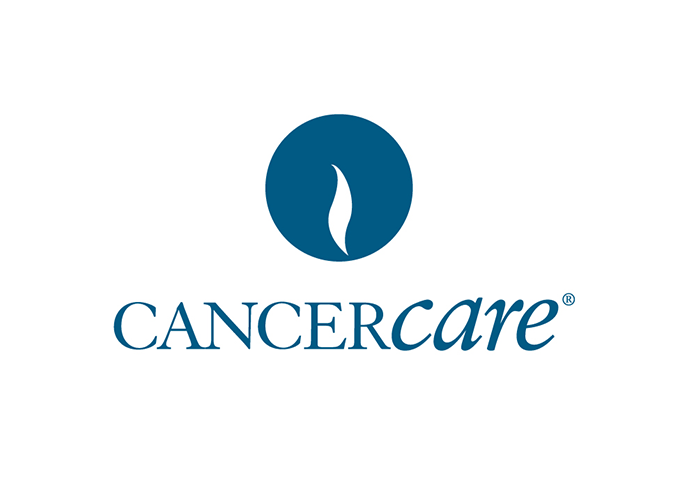Testicular cancer
Testicular cancers are relatively rare but highly curable, and occur predominantly in young and middle aged males. Testicular cancers were among the first types of cancers to be cured by radiation and/or chemotherapy, and treatment has been refined over the last two decades. Currently, over 70% of all patients are curable regardless of the extent of cancer. Thus, all treatment of testicular cancer is delivered with the intent to cure. However, it is important to know the extent of cancer and the specific type of testicular cancer in order to administer the best therapy.
The testicles are located inside the scrotum (a sac of loose skin that lies directly under the penis). The testicles are similar to the ovaries in women. Sperm and male hormones are made in the testicles. Testicular cancer—also called germ cell cancer—occurs in the tissues of one or both testicles. Similar cancers called “non-gonadal germ cell cancers” can also occur outside the testicle; non-gonadal germ cell cancers are not discussed in this section.
Testicular cancer is the most common cancer in men 15 to 35 years old. Men who have an undescended testicle (a testicle that has never moved down into the scrotum) are at higher risk of developing testicular cancer than men whose testicles have moved normally down into the scrotum. This is true even if surgery has been performed early in life to place the testicle in the appropriate place in the scrotum.
A swelling in the scrotum is usually the first sign of testicular cancer. A doctor will examine the testicles to feel for any lumps. If any lumps are found, the doctor will perform an ultrasound examination, which uses sound waves to make a picture of the inside of the testes. In addition, the physician may perform a computed tomography (CT) or positron emission tomography (PET) scan to determine whether cancer is present. A PET scan is similar to a CT scan; however, PET scans can detect live cancer tissue. Prior to a PET scan, the patient receives an injection of a substance that contains a type of sugar attached to a radioactive isotope. The cancer cells “take up” the sugar and attached isotope, which emits positively charged, low energy radiation (positrons). The positrons react with electrons in the cancer cells, which creates the production of gamma rays. The gamma rays are then detected by the PET machine, which transforms the information into a picture. If no gamma rays are detected in the scanned area, it is unlikely that the mass in question contains living cancer cells.
When cancer is suspected, the entire testicle is surgically removed (orchiectomy) through an incision in the groin. The surgically removed tissue is then examined under a microscope to determine whether cancer cells are present. Removal of a small piece of tissue (biopsy) is usually not done because this is thought to cause spread of the cancer. When the cancer is small and localized to the testicle, removal of the testicle may be all of the treatment that is necessary to cure the cancer. The surgically removed testicle is examined under the microscope to determine the type of cancer. In some patients the cancer consists of only one cell type. But for many patients, the cancer under the microscope consists of a mixture of cell types.
Testicular cancer is broadly divided into two different types, seminoma and nonseminoma, based on the appearance of cells under the microscope. Nonseminomas are, in general, more difficult to cure than seminomas. Nonseminoma cell types include: embryonal carcinoma, teratoma, yolk sac carcinoma, choriocarcinoma, and various combinations that are referred to as “mixed cell types”. For nonseminoma cancer teratoma presents the lowest risk of spread and choriocarcinoma presents the highest risk of spread; the other cell types are of intermediate risk.
Treatment planning depends upon whether the testicular cancer is classified as seminoma or nonseminoma. Seminomas are more sensitive to radiation therapy and are easier to cure than nonseminomas. Patients with all stages of seminoma have a cure rate that exceeds 90%, and patients with seminoma confined to the testicle have a cure rate approaching 100%. If there is a mixture of seminoma and nonseminoma components upon examination under the microscope, the cancer is diagnosed as nonseminoma because the cancer will be more aggressive due to the nonseminoma part of the cancer.
The extent of disease, or “stage” is determined after surgical removal of the testicle. All patients will require CT or magnetic resonance imaging (MRI) scans of the abdomen, chest, and sometimes the brain or bones to look for spread of disease beyond the testicle.

Lymph nodes are small, bean-shaped structures that are an essential component of the immune system. They are found throughout the body and are interconnected with lymph channels. Testicular cancer tends to spread through lymph channels that drain into lymph nodes in the groin area, into channels near the large blood vessel (the aorta) carrying blood from the heart, and into lymph nodes between the abdomen and back called retroperitoneal lymph nodes.
RETROPERITONEAL LYMPH NODE DISSECTION (RPLND)
Direct surgical evaluation of the retroperitoneal lymph nodes is an important aspect of treatment planning in many adults with testicular cancer, especially those with clinically localized nonseminoma Stage I and II disease. This is because some patients will appear to have no evidence of cancer in the retroperitoneal lymph nodes on CT scan and will appear to have a Stage I cancer. They may actually have lymph nodes involved with cancer that were not detectable by the CT scan and may actually have Stage II cancer. Some patients who appear to have cancer on CT scan will not have lymph nodes involved and actually have a Stage I cancer.
RPLND for diagnosis and prevention of relapse is a relatively major operation requiring skill to sample and remove all the nodes. The major complication is damage or removal of the connections of the sympathetic nervous system, which are located next to the lymph nodes. This can lead to disruption of ejaculation of sperm, thereby leading to infertility. Surgeons have devised techniques to spare the sympathetic nervous system connections while still removing most lymph nodes; this preserves normal ejaculation in approximately 90% of patients.1Newer treatment strategies involving the adjuvant (post-surgery) administration of chemotherapy have decreased the number of patients requiring lymph node dissection.
TUMOR OR CANCER MARKERS
An important aspect of the evaluation of testicular cancer is the use of blood or serum tests to detect cancer markers. Cancer markers are abnormal substances in the blood associated with the presence of cancer somewhere in the body. Common cancer markers that are present in the blood of patients with testicular cancer include:
- Alpha-fetoprotein (AFP)
- Beta human chorionic gonadotropin (BHCG)
- Lactate dehydrogenase (LDH)
These cancer markers may detect cancers that are too small to be detected with a CT scan. In males under age 15, about 90% of testicular germ cell cancers are yolk sac tumors that make AFP, which is an excellent indicator of response to therapy and disease status.
It is important to realize that the absence of cancer markers in the blood following treatment does not always mean the absence of cancer, even when cancer markers were present at diagnosis. Patients who appear to have seminoma when the cancer is examined under the microscope and have elevated serum levels of AFP are treated as if they have nonseminoma because seminoma cells do not secrete this cancer marker and other cell types must be present, even though they may not be visible under the microscope. Elevation of the BHCG is found in approximately 10% of patients with pure seminoma and is an indication of metastatic spread of disease, but does not change the cellular diagnosis.
Type of treatment and outcomes depend on the stage and spread of the cancer. In order to learn more about the most recent information available concerning the treatment of testicular cancer, click on the appropriate stage.
Stage I Seminoma: Stage I testicular cancer is limited to the testes. Pathologic Stage I cancer refers to patients who have a lymph node dissection that is free of cancer. Clinical Stage I cancer is used to classify patients who do not undergo a lymph node dissection.
Stage II Seminoma: Stage II testicular cancer involves the testes and the retroperitoneal lymph nodes. Retroperitoneal lymph node involvement is further characterized by the number and size of involved lymph nodes.
Stage III Seminoma: Stage III testicular cancer has spread beyond the retroperitoneal lymph nodes. Stage III seminoma is subdivided into “non-bulky” Stage III and “bulky” Stage III based on the amount of cancer present at diagnosis.
Recurrent and/or Refractory Seminoma: Cancer has returned or progressed after primary treatment and may be resistant to chemotherapy.
Stage I Nonseminoma: Stage I testicular cancer is limited to the testes. Pathologic Stage I cancer refers to patients who have a lymph node dissection that is free of cancer. Clinical Stage I cancer is used to classify patients who do not undergo a lymph node dissection. A retroperitoneal lymph node dissection detects cancer spread in 15–30% of patients whose diagnostic tests indicated no spread prior to surgery.
Stage II Nonseminoma: Stage II testicular cancer involves the testes and the retroperitoneal lymph nodes. Retroperitoneal lymph node involvement is further characterized by the number and size of involved lymph nodes.
Stage III Nonseminoma: Stage III testicular cancer has spread beyond the retroperitoneal lymph nodes. Stage III testicular cancer is subdivided into “non-bulky” Stage III and “bulky” Stage III based on the amount of tumor present at diagnosis.
Recurrent and/or Refractory Nonseminoma: Cancer has returned after primary treatment and may be resistant to chemotherapy.
REFERENCE:
1. Jewett MAS, Groll RJ. Nerve-sparing retroperitoneal lymphadenectomy. Urologic Clinics of North America. 2007;34:149-158.
Copyright © 2020 Omni Health Media Testicular Cancer Information Center. All Rights Reserved.
